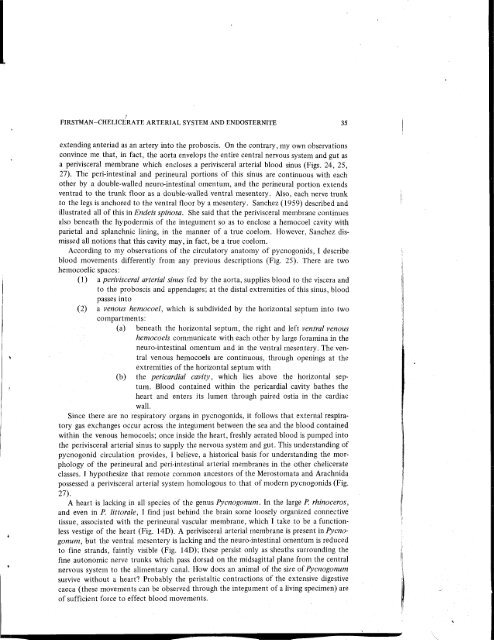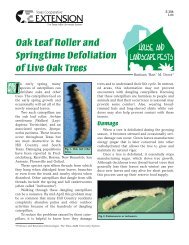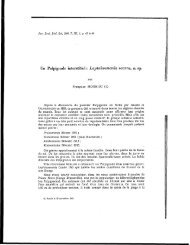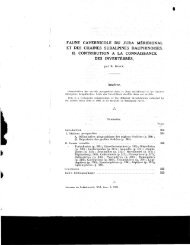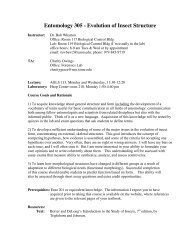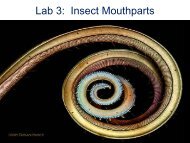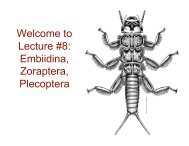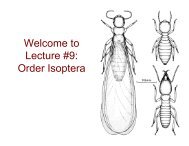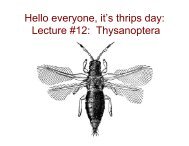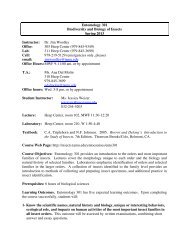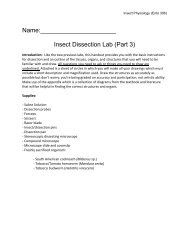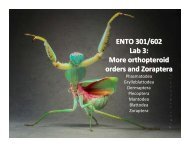THE RELATIONSHIP OF THE CHELICERATE ARTERIAL SYSTEM ...
THE RELATIONSHIP OF THE CHELICERATE ARTERIAL SYSTEM ...
THE RELATIONSHIP OF THE CHELICERATE ARTERIAL SYSTEM ...
You also want an ePaper? Increase the reach of your titles
YUMPU automatically turns print PDFs into web optimized ePapers that Google loves.
;FIRSTMAN-<strong>CHELICERATE</strong> <strong>ARTERIAL</strong> <strong>SYSTEM</strong> AND ENDOSTERNITE 35exten ding anteriad äs an artery into the proboscis. On the contrary, my own observationsconvince me that, in fact, the aorta envelops the entire central nervous System and gut äsa perivisceral membrane which encloses a perivisceral arterial blood sinus (Figs. 24, 25,27). The peri-intestinal and perineural portions of this sinus are continuous with eachother by a double-walled neuro-intestinal omentum, and the perineural portion extendsventrad to the trunk floor äs a double-walled ventral mesentery. Also, each nerve trankto the legs is anchored to the ventral floor by a mesentery. Sanchez (1959) described andillustrated all of this in Endeis spinosa. She said that the perivisceral membrane continuesalso beneath the hypodermis of the integument so äs to enclose a hemocoel cavity withparietal and splanchnic lining, in the manner of a true coelom. However, Sanchez dismissedall notions that this cavity may, in fact, be a true coelom.According to my observations of the circulatory anatomy of pycnogonids, I describeblood movements differently from any previous descriptions (Fig. 25). There are twohemocoelic spaces:(1) a perivisceral arterial sinus fed by the aorta, supplies blood to the viscera andto the proboscis and appendages; at the distal extremities of this sinus, bloodpasses into(2) a venous hemocoel, which is subdivided by the horizontal septum into twocompartments:(a) beneath the horizontal septum, the right and left ventral venoushemocoels communicate with each other by large foramina in theneuro-intestinal omentum and in the ventral mesentery. The ventralvenous hemocoels are continuous, through openings at the(b)extremities of the horizontal septum withthe pericardial cavity, which lies above the horizontal septum.Blood contained within the pericardial cavity bathes theheart and enters its lumen through paired ostia in the cardiacwall.Since there are no respiratory organs in pycnogonids, it follows that external respiratorygas exchanges occur across the integument between the sea and the blood containedwithin the venous hemocoels; once inside the heart, freshly aerated blood is pumped intothe perivisceral arterial sinus to supply the nervous System and gut. This understanding ofpycnogonid circulation provides, I believe, a historical basis for understanding the morphologyof the perineural and peri-intestinal arterial membranes in the other chelicerateclasses. I hypothesize that remote common ancestors of the Merostomata and Arachm'dapossessed a perivisceral arterial System homologous to that of modern pycnogonids (Fig.27).A heart is lacking in all species of the genus Pycnogonum. In the large P. rhinoceros,and even in P. littorale, I find just behind the brain some loosely organized connectivetissue, associated with the perineural vascular membrane, which I take to be a functionlessvestige of the heart (Fig. 14D). A perivisceral arterial membrane is present m Pycnogonum,but the ventral mesentery is lacking and the neuro-intestinal omentum is reducedto fine Strands, faintly visible (Fig. 14D); these persist only äs sheaths surrounding thefine autonomic nerve trunks which pass dorsad on the midsagittal plane from the centralnervous System to the alimentary canal. How does an animal of the size of Pycnogonumsurvive without a heart? Probably the peristaltic contractions of the extensive digestivecaeca (these movements can be observed through the integument of a living specimen) areof sufficient force to effect blood movements.


